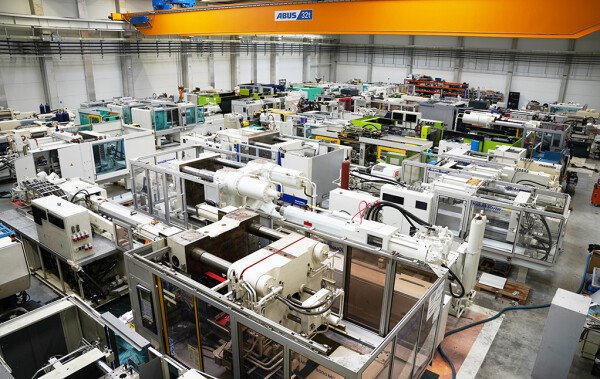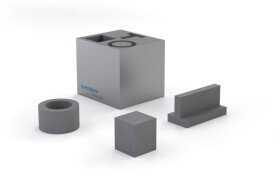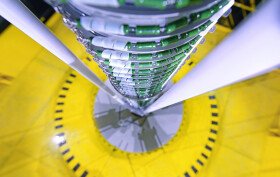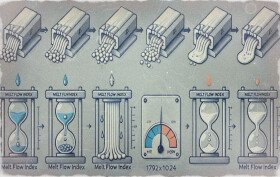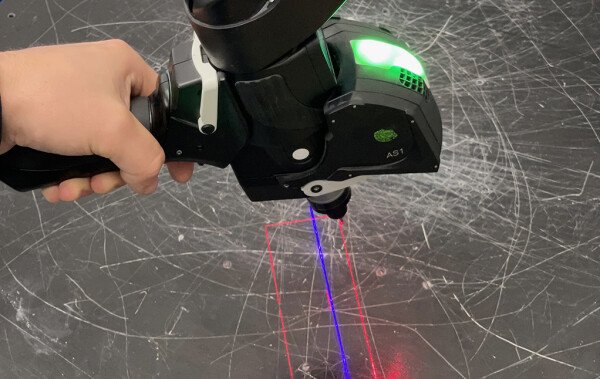Radiation Crosslinking – way to improve the properties of polymers, Part 2
3. Results and discussion
The gel content, mechanical and thermal behavior of selected polymers (TPE-E, LD-PE, HD-PE), before and after irradiation, were studied. For easy of evaluation of the measured data reasons, and the comparison of the irradiated polymer with a non-irradiated one, dimensionless values (-) were used in some cases. The property of the non-irradiated polymer had the dimensionless value of 1, while others were expressed as the ratio of measured property of irradiated polymers to the same property of non-irradiated polymer.
3.1. Gel content
The results of the Gel content measurements of TPE-E after irradiation is showed in Figure 4. The maximum of gel content (86.3%) is achieved at a dose of 198 kGy.
At lower radiation doses, a gel content of zero was measured for LD-PE and HD-PE (Figure 5, 6). Despite of these results, the tensile tests show an improving trend even at these low doses. This is explained by the formation of micro-gels, which form elastically active network chains and can transmit tension. In determining the gel content, however, these micro-gels pass the filter together with the soluble parts - sol. Gel content measurement accuracy depends on a size of used mesh sieve. The maximum value of gel content for both polyolefines is at dose of 198 kGy. This value is 67.3% in case of LD-PE and 65.3% in case of HD-PE.
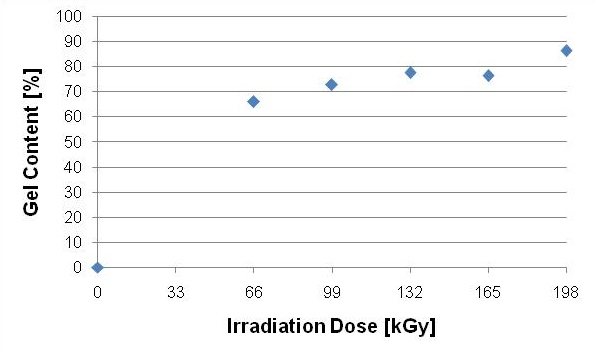 |
|
Figure 4. Gel Content graphical display of TPE-E after irradiation |
 |
|
Figure 5. Gel Content graphical display of LD-PE after irradiation |
 |
|
Figure 6. Gel Content graphical display of HD-PE after irradiation |
3.2 Mechanical properties
The influence of different doses of radiation on the mechanical properties is represented in tensile test, creep behavior results of the tested polymers (TPE-E, LD-PE, HD-PE) and were studied at ambient (23°C) and elevated temperature (80°C, 100°C).
3.2.1. Tensile test
The tensile strength results depend mainly on the degree of crosslinking and the number of tie molecules as well as on the crystal morphology.
As can be seen in Figure 7, the tensile strength of TPE-E rises more than 35% after irradiation with a dose of 66 kGy. At higher doses above 66 kGy, the tensile strength drops down. Above 132 kGy, the value of the tensile strength oscillates around the value of the non-irradiated TPE-E test specimens. In the opposite, the gel content rises with increasing radiation dose.
The Modulus 100 (resulting stress at 100% elongation of the test specimens) rises gradually in line with the dose of irradiation. The Modulus 100 with a dose of 198 kGy is more than 50% higher than the non-irradiated specimens (Figure 7).
 |
|
Figure 7. Comparison of change of tensile strength and E – modulus of TPE-E at 23°C |
Elongation of the TPE-E goes down continually in line with the irradiation dose. At the highest applied dosage of 198 kGy, the elongation remains only at 25% of the former (non-irradiated) test specimens. Due to the irradiation, the TPE-E has significantly lost its flexibility.
 |
|
Figure 8. TPE-E comparison of change of elongation at break at the ambient temperature |
Comparison of the tensile strength and E - modulus (at 23°C) of high-density polyethylene (HD-PE) and low-density polyethylene (LD-PE) before and after irradiation is given in the Figures 9, 10 and Figures 14, 15. It is evident, that crosslinking improves the tensile strength (σt) and E – modulus of both types of PE. The irradiation has a positive effect on tensile strength (σt) – at ambient temperature both irradiated types of polyethylene have improved their values of tensile strength by approx. 10% for LD-PE and 5% for HD-PE compared to the non-irradiated polyethylene. However, as can be seen from Figure 9, the highest value of dose does not mean a highest value of tensile strength.
At higher temperatures of 100°C, the positive effect of irradiation on the tensile strength is much higher: For LD-PE, after irradiation with 198 kGy it is nearly 60% higher compared to the standard (Figure 9), whereas HD-PE shows a mere 10 % increase (Figure 14).
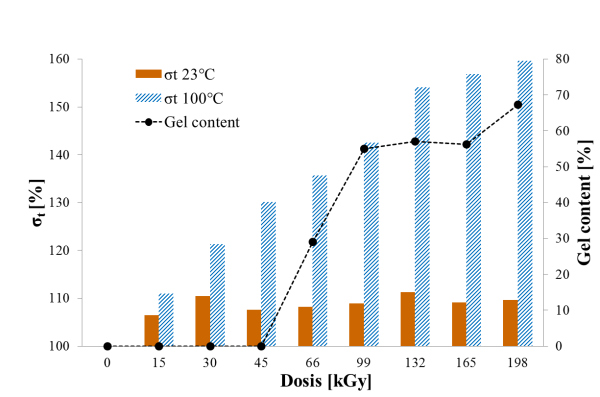 |
|
Figure 9. Comparison of change of tensile strength of LD-PE at 23°C and 100°C |
At room-temperature, the irradiation has also a positive effect on the E-modulus of both types of polyethylene: After irradiation it is higher by 30-35% in case of LD-PE (Figure 10) and by 35 % for the HD-PE (Figure 15). On the other hand, at 100°C the E – modulus does not show any significant increase with both grades of PE.
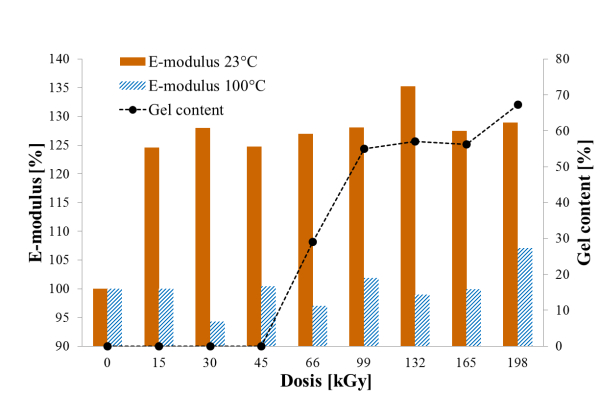 |
|
Figure 10. Comparison of change of E – modulus of LD-PE at 23°C and 100°C |
Figure 11 shows the dependency of the modulus of elasticity of irradiated and non-irradiated LD-PE on temperature in the range (from room temperature 23 °C to elevated temperature 100°C). Modulus of elasticity of non-irradiated LD-PE and also LD-PE irradiated with a dose of 132 kGy decreased exponentially with increasing temperature. In contrast, the tensile strength (Figure 12) decreased linearly with raising temperature in the range from 23°C - 100°C. It should also be noted that the polymer irradiated with a dose of 132 kGy showed for all samples higher tensile strengths compared to the non-irradiated standard.
 |
|
Figure 11. LD-PE comparison of E-modulus at the different temperatures |
 |
|
Figure 12. LD-PE comparison of tensile strength at the different temperatures |
 |
|
Figure 13. LD-PE comparison of elongation at the tensile strength at the different temperatures of measurement |
Whilst the changes of the elastic module and the tensile strength of LD-PE before and after irradiation were in a similar magnitude, the changes in elongation at the tensile strength were quite different (Figure 13). Elongation of non-irradiated LD-PE was rising from the value of 67.6% at the room temperature to value of 74.1% at 40°C and then was decreasing to a value of 54.8% at a maximum temperature 100°C. In contrast, the elongation of the irradiated LD-PE increased throughout the measured temperature range from the value of 70.9% to a value of 91.2%.
 |
|
Figure 14. Comparisons of tensile strength of HD-PE at 23°C and 100°C |
 |
|
Figure 15. Comparisons of E – modulus of HD-PE at 23°C and 100°C |
The Elastic modulus of non-irradiated HD-PE and also HD-PE irradiated with 132 kGy decreased exponentially with increasing temperature. In the case of non-irradiated HD-PE, the elastic modulus decreased from the value of 873.1 MPa at room temperature to the value of 70.9 MPa at 120°C. Non-irradiated test specimens could not be measured at 130°C (Figure 16) compared to irradiated HD-PE the elastic modulus 45.8 MPa at 130°C were measured.
 |
|
Figure 16. HD-PE comparison of E-modulus at the different temperatures |
The tensile strength of non-irradiated HD-PE and also HD-PE irradiated with 132 kGy decreased exponentially with increasing temperature. In the case of non-irradiated HD-PE, it decreased from the starting value of 22.5 MPa at room temperature to the value of 4.5 MPa at 100°C. Non-irradiated test specimens could not be measured at 130°C (Figure 17) compared to irradiated HD-PE the tensile strength of 3.4 MPa at 130°C were measured.
 |
|
Figure 17. HD-PE comparison of tensile strength at the different temperatures |
From Figure 18 it is evident, that the elongation at the tensile strength is increasing with increasing temperatures for both the irradiated and non-irradiated HD-PE, wherein the non-irradiated HD-PE shows higher values in the lower temperature range. The turning point is at a temperature of about 80°C, from which above the irradiated HD-PE reaches higher values of elongation at the tensile strength.
The maximum of elongation at the tensile strength non-irradiated HD-PE was 44.5% at 110°C. For irradiated HD-PE was the maximum achieved elongation of 50.4% at 120°C. Then the elongation of both (irradiated, non-irradiated) decreased. Interestingly, above 120°C only the irradiated sample has a remaining level of elongation, whereas the non-irradiated sample fails.
 |
|
Figure 18. HD-PE comparison of elongation at the tensile strength at the different temperatures of measurement |
• continuation of the article will be published on 2th March 2015
White paper form - Radiation crosslinking: From plastic to hight-performance material
Authors: ANDREAS OSTROWICKI1, MICHAL DANĚK1, MIROSLAV MAŇAS2, ZDENĚK HOLÍK3, ALEŠ MIZERA3, MARTIN ŘEZNÍČEK3
1BGS Beta-Gamma-Service GmbH & Co. KG., Fritz-Kotz-Strasse 16, Wiehl, D-51674, Germany, E-mail: ostrowicki@bgs.eu, danek@bgs.eu, Phone: +49-22617899-0, Fax: +49-22617899-45
2Tomas Bata University in Zlin, Faculty of Applied Informatics, ICT Technology Park, Nad Stranemi 5656, Zlin 5, CZ-760 05, Czech Republic, E-mail: manas@fai.utb.cz, Phone: +420-57603-5631
3Tomas Bata University in Zlin, Faculty of Technology, Department of Production Engineering, TGM 275, Zlin, CZ-762 72, Czech Republic, E-mail: holik@ft.utb.cz, Phone: +420-57603-5280, Fax: +420-57603-5176
-

BGS Beta-Gamma-Service GmbH & Co. KG.
Industrial irradiation, processes of optimization of plastic products, radiation crosslinking of plastic products, radiation sterilization, beta and...
PIMM – a brand of Dopak, is a center for used plastics processing machinery in the heart of Europe
30.7.2025 Imagine a place where plastics processing becomes simpler, more cost-effective, and better tailored to your needs. That place is our used machinery center for injection molding and peripheral equipment – located in Wrocław, Poland.








